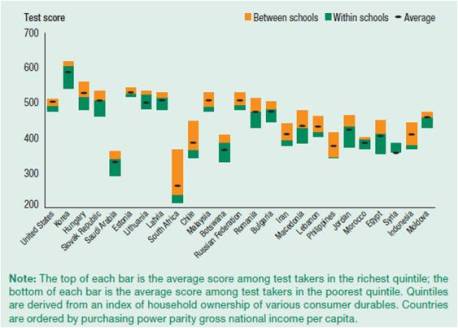Residents of the pukka houses (formerly temporary shacks) in front of the apartment complex where my family lives in New Delhi have decided to send their kids to private, English-medium schools, cutting corners to save enough to be able to afford it.
The children had (and still have) access to free basic education in government schools, but they and their parents don't care. Notionally enrolled, more often than not the kids were seen playing cricket on the street that divides their houses from our apartment complex. Things began to change as India’s economy took off, and, with that, the perceived premium on quality education. While the public education system remains in the doldrums, market forces seem to be compensating, at least partially.
Ever since moving to South Africa, I have puzzled over the absence of a similar private-sector-led response here.
First, some background. South Africa has fundamentally transformed its education system since the end of apartheid in 1994. Access to basic education has improved dramatically while becoming much more equitable across the races, on the back of significant public expenditures—in the range of 5-6 percent of GDP (close to 20 percent of the budget)—that have also markedly improved their pro-poor targeting.
Quality-related outcomes have remained disappointing, however. Test score results have been miserably poor, retaining an unusually large performance gap by income status. This is clearly brought out in international literacy and numeracy tests where South Africa fares poorly on not only in comparison with other middle-income countries but also a number of low-income African countries. At the same time, returns to education (at least at the tertiary level) have been found to be high.
Average grade 8 Trends in Math and Science Study test scores (2003)
(Click on the graphs to see them larger)
That the shortfalls in the public education system are hindering South Africa’s quest for inclusive growth is almost universally acknowledged. There is far less agreement, however, over what needs to (or realistically can) be done.
Analyses by the World Bank and others have attributed the expenditure-outcomes disconnect to a variety of structural factors, ranging from lack of basic information on school performance to limited parent participation, lack of school autonomy, weak links between performance and teacher pay, insufficiently-trained teachers, strong resistance to change from the teacher unions, highly unequal schools’ infrastructure and physical assets based on income differences, and a host of adverse socio-economic factors affecting the poor communities.
Why then has the private sector not stepped in, as it is increasingly doing in countries such as India and Kenya? In fact, it has. Enrollment in private schools has increased by 76 percent in the past decade, with many schools charging less than R6,000 ($777) per year, according to a recent Financial Times report.
Although still only 5 percent of total enrollment, the rapid growth of low-cost private schools is a welcome sign for a system clearly in distress. Consider the example cited by the FT article of St Francis College, a township-based school, which recently achieved a 100-percent pass rate among students graduating from its high school. Contrast this with the national pass rate of only 68 percent for the matriculation exam, with only 15 percent of the students achieving 40 percent marks or more on average (National Development Plan: 2030 -- National Planning Commission).
Low-cost private schooling may not substitute for free good-quality public education for the poor; affordability would still be an issue even at the relatively low fees levels. But it could demonstrate a partial step, around which more systemic changes could be designed. The poor seem to be betting their limited resources on it.




Join the Conversation